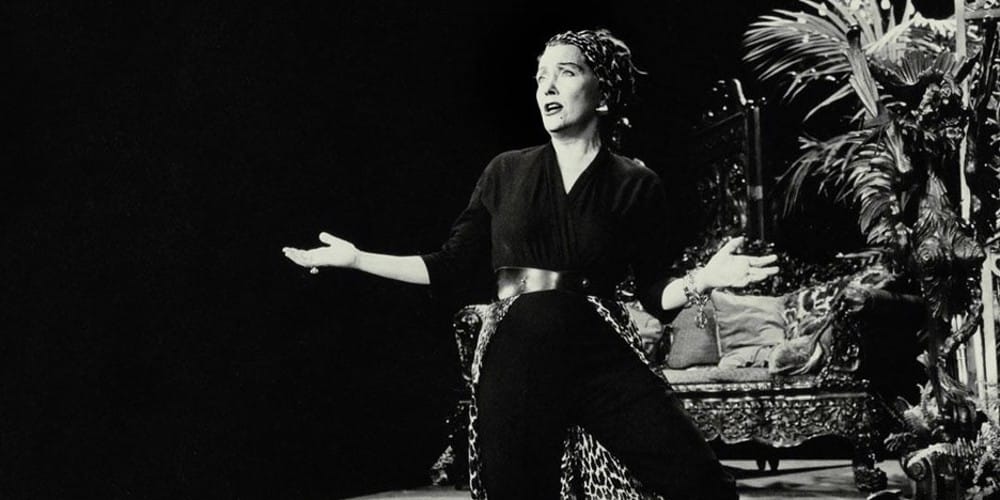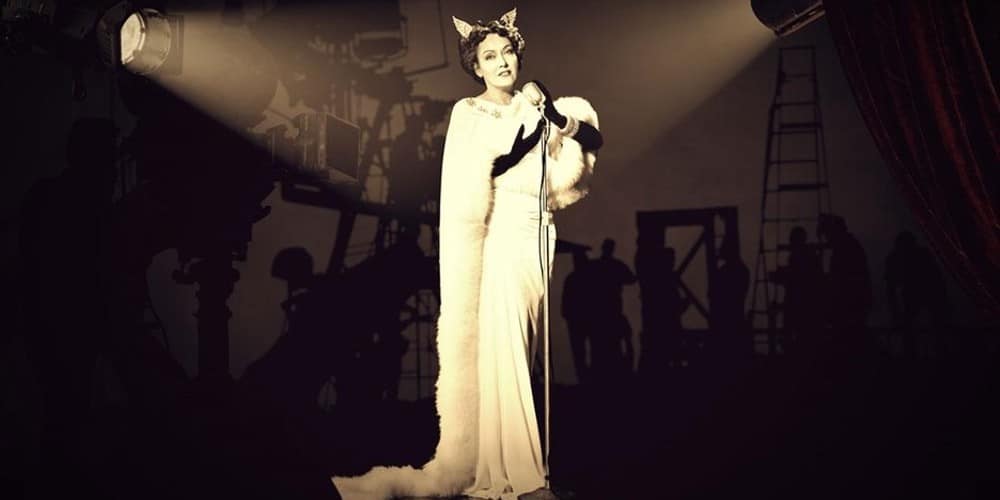Read also:
How to Watch FX Live Without CableHow To Watch AMC Without CableHow to Watch ABC Without CableHow to Watch Paramount Network Without CableJeffrey Schwarz’s documentary on a never-was musical adaptation of Sunset Boulevard and its would-be makers is insightful if a bit scattered.
(This review is part of our 2021 coverage of Reeling: The Chicago LGBTQ+ International Film Festival)
“After Salome, we’ll make another picture, and another picture” and then a musical, and then a musical based on writing the musical, and then a picture about writing the musical and the musical based on writing the musical! Maybe it’s not something Norma Desmond could’ve dreamed of, but Gloria Swanson certainly would have approved.
Boulevard! A Hollywood Story tells the tragic tale of an ill-fated attempt to adapt Billy Wilder’s 1950 masterpiece Sunset Boulevard into a Broadway musical and the star at the center of it all. Sunset Boulevard follows Joe Gillis (William Holden), a down-and-out writer who finds himself at the gothic and mysterious home of Norma Desmond (Gloria Swanson), an aging silent film star determined to make her “return” to the pictures. As she finds every door closed to her, including Joe’s heart, Norma’s despair and loneliness mount to a delirious pitch, and she ultimately destroys everything and everyone she holds dear.

After the stupendous success of Sunset, Gloria Swanson, then 50, also realized that not only were the old doors in Hollywood closed to her, but they also barely even existed anymore. She, like Norma, came of age alongside cinema in the silent years. A phenomenon in early pictures, Swanson’s appeal had faded in the talkies, but she always maintained her elegant appeal. When the time came to cast Norma, there seemed no truer person to play the part than Swanson. Together she and Wilder would create one of the most memorable films in cinema history, a spellbinding work of art that fuses person, persona, and character. But that was all.
Then, as now, substantial roles for older women were few and far between, yet Gloria yearned for her public. As per director Jeffrey Schwarz’s insightful documentary, Swanson soon chanced upon a pair of song and piano men, Dickson Hughes and Richard Stapely, a romantic couple struggling to make it in Hollywood. After a handshake deal, the three of them, each hungry for audience acclaim, moved in together in Palm Springs and got to work.
Gloria Swanson’s life is well known… which is why it’s a welcome choice that Schwarz follows the writers instead.
But, after Swanson was professionally rejected by Paramount Studios and romantically spurned by Stapely, she abandoned the project, casting the couple adrift. From archival audio and video performances of selections from the project, it’s easy to see why Paramount might have been hesitant to grant the rights. For a project based on as dark and rich a text as Sunset Boulevard, Boulevard’s proposed songs are awkward, coy, and bizarrely plucky. It sounds like a resoundingly average 1950s musical, pervasively optimistic, bizarrely so when compared to its source material.
It’s the murky and complex personal rejection that takes more unpacking. Gloria Swanson’s life is well known. There is no shortage of biographies, including a rather rapturous autobiography, which is why it’s a welcome choice that Schwarz follows the writers instead.
Following the collapse of Boulevard: The Musical and Gloria’s attempt to insert herself into their pre-existing relationship, Hughes and Stapely separated. Stapely would completely reinvent himself back in Europe, remaining married to a woman for the remainder of his life. Hughes worked consistently in Hollywood, living gay mostly openly, even during the AIDS crisis, when he offered his time and talent to Marianne Williams’ Project Angel Food.
For documentaries, magic comes from finding lost information in forgotten places.
Though Stapely and Hughes would see each other again before they passed away, it’s clear that all they, like Swanson, had been with Sunset Boulevard, remained haunted by the story of Boulevard and its summer. When Andrew Lloyd Webber mounted his 1993 operetta version of Sunset Boulevard with Glenn Close, Hughes attempted an independent production of his own called Swanson on Sunset. Sadly, Stapley’s proposed autobiographical show—which featured several tunes salvaged from Boulevard—failed to get financial backing.
That was the last the public heard of Boulevard: The Musical until Schwarz went digging. Deep in UT Austin’s acclaimed film archive resides Gloria Swanson’s remarkably comprehensive collection of personal papers. It’s there that Schwarz found the recordings of songs and brainstorming sessions that he deploys in Boulevard! to share Swanson’s marvelous self-narration of the musical’s production. With that said, archives like UT’s are a rich but conventional place to find material for a documentary.
For documentaries, magic comes from finding lost information in forgotten places. That’s what Schwarz obtained when he discovers a treasure box from Richard Stapely, complete with recorded interviews. It’s a rare and incredible bit of luck that allows for a unique look at Stapely’s heartbreaking perspective on the writing of Boulevard, as well as his relationships with Swanson and Hughes. The intimacy of Stapely’s record deepens the human element of the documentary and complexifies its themes.

Both Boulevard the musical and Boulevard! the documentary trace the afterlives of a film and a woman. A motif of returning and commentary on the changing of media and mediums run through both projects. But in attempting to untangle the legend from the truth, Schwarz gets a bit lost in the haze of Hollywood.
At the start, the parallels between Gloria and Norma and between Sunset Boulevard and the failed production of Boulevard the musical are clear. Schwarz is particularly charmed by the connections he can build between his subjects: an aging star trying to make a return, unrequited romances with a younger writer, and pet funerals. It’s as if to (rightly) say that line between art and actuality can be thin and porous, especially in Hollywood.
Yet, in Boulevard!‘s last act, Schwarz tries to discuss the ways Gloria was unlike Norma Desmond. His arguments make little sense, and he lacks the evidence to support his claims. Had Schwarz dedicated time to examining the paradoxes of Swanson’s many lives, Boulevard! might have stuck its landing. But most of the evidence available seems to point to Gloria Swanson being more Norma than normal. This lop-sided conclusion feels like an attempt to assure her friends and family, who were generous with their time and information, that their matriarch would be allowed to be human at last.
Had Schwarz dedicated time to examining the paradoxes of Swanson’s many lives, Boulevard! might have stuck its landing.
And Swanson was human. But as a star, she was also more than human. Stars are a never-ending spectacle of fire and flame. Certain aspects of Swanson were so much larger than life that Schwarz smartly opts to employ animation when film or photos are unavailable. These endlessly charming and delicious drawings capture the story’s quaintness and campiness. Swanson remains glamorous, her perfectly placed beauty mark and the cheekbones she hung her whole career on present in full force. Hughes and Stapely are baby-faced beginners at the feet of a goddess.
Thus, animation becomes yet another medium that Sunset Boulevard has crossed. Never a comeback, always a return. It’s a film that haunts the American cultural imagination. It’s a story that wrestles with sexual power, celebrity, aging, and the conflation of reality, and it has reappeared more than once. Boulevard!: A Hollywood Story is, while flawed, a charming and thoughtful look at the story and its female star that continues to be an emblem to audiences, those wonderful people out there in the dark, all across the world.